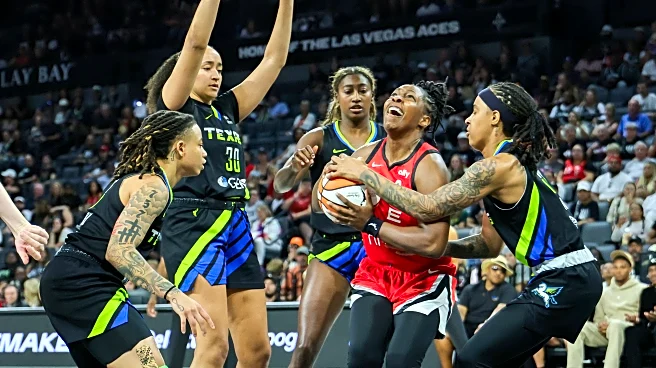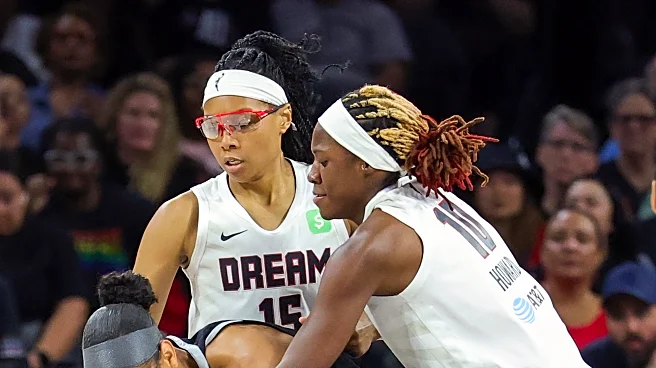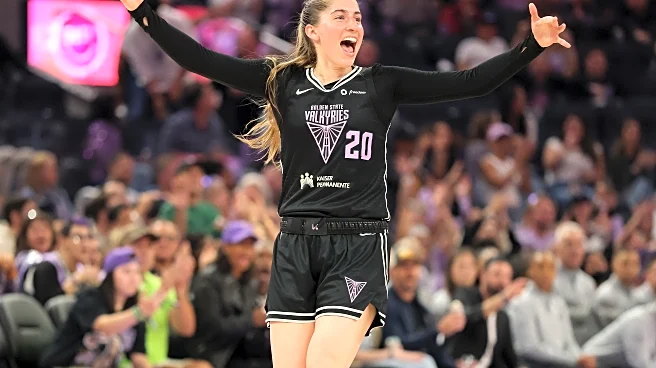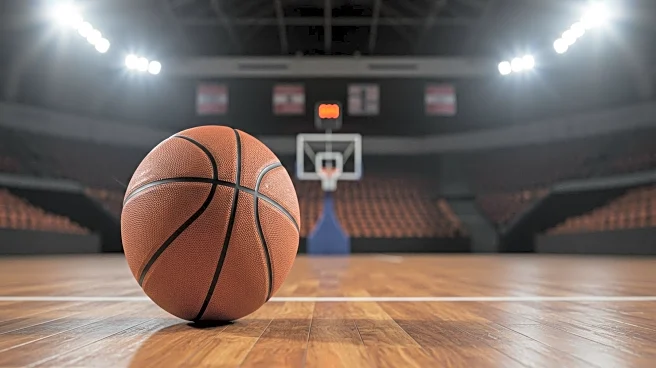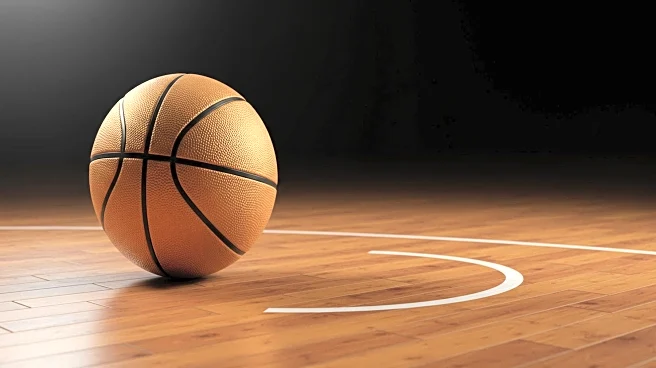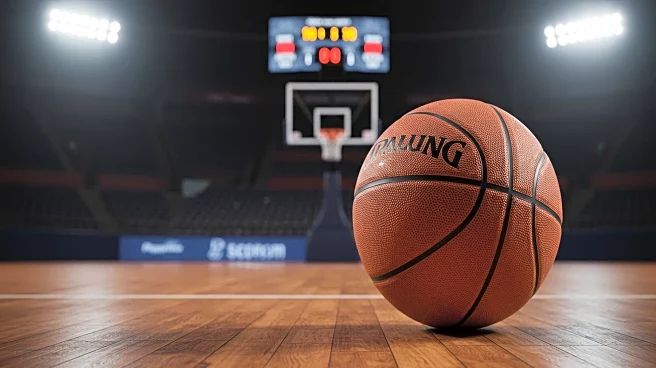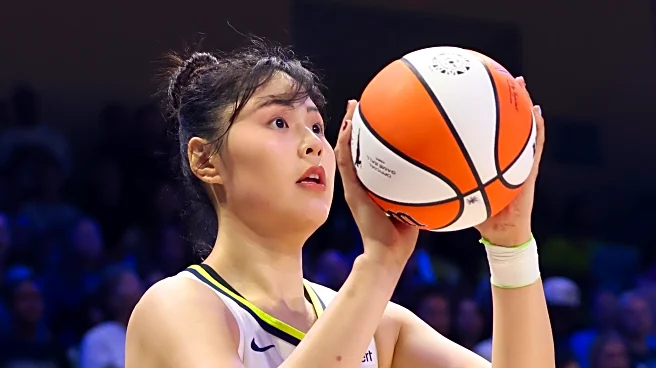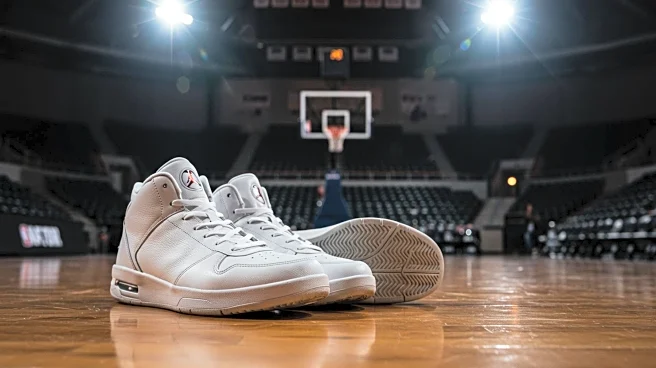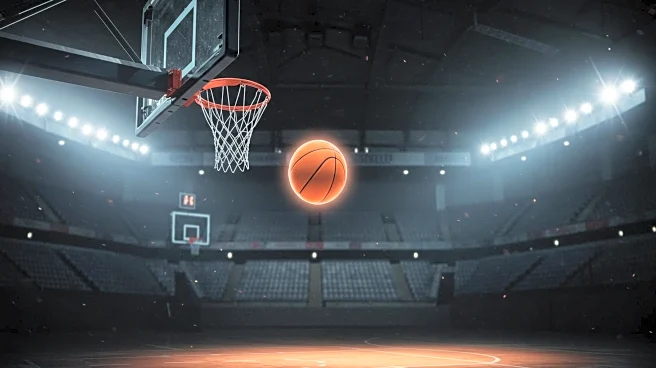
For the second straight year, the Dallas Wings are running out the string on a non-contending season. With eight games remaining, Dallas has been eliminated from playoff contention after wasting a generational performance from Paige Bueckers. The organizational focus will now shift to securing top lottery odds and continuing to develop the bevy of young talent surrounding their superstar rookie guard. It’s been a trying season, but not one without encouraging moments.
Between numerous injuries, two
massive trades, and several hardship players cycling through the organization, there has been little in the way of continuity for this Wings group. As a result of this roster turmoil (and poor roster construction), Dallas has been mostly relying on young, unproven players. The Wings are the youngest team in the WNBA, and four out of their top six players in games played and total minutes are rookies. Though competitive in most games, the Wings have lacked the poise, maturity, and cavalry to deliver wins.
Now, as the season winds down, General Manager Curt Miller must prepare to make difficult decisions about the non-Bueckers players on this roster. The WNBA will hold two expansion drafts this offseason— while the league hasn’t stated how many players each team will be permitted to protect, last year that number was six. That number could be less this year to accommodate two new franchises and a landscape where almost every veteran player is a free agent.
With so many cost-controlled young players on the books, Miller faces a tall task here. There are certain to be intriguing young players exposed. Who should the organization prioritize? That question is what the rest of the season is all about. Let’s take a closer look at the Wings’ youth (age 25 and younger) and try to put ourselves in the GM’s chair.
The Rookies
Aziaha James
It’s been an up-and-down season for James. The 12th overall pick in the 2025 draft struggled to break into the rotation early but eventually earned big-time minutes as the Wings battled injuries and underperformance. During a nine-game stretch from June 20th through July 13th, James averaged 14.4 points and 2.9 assists per game, shooting 42% from the floor and 39% from three (4.2 attempts per game).
James may have hit the “rookie wall” after that, and Arike Ogunbowale’s return from injury and improved play pushed James to the fringes of the rotation, and the team has cited inconsistencies on defense as a primary reason for this. Indeed, James needs to work on her defensive positioning and recognition, but her plus athleticism and motor should allow her to hold her own on that end.
I’ve been very impressed with James’s polish on offense. In the W, she’s showcased the smooth handle, pull-up shooting, and rim finishing ability that made her a first-round pick. Apart from that, her passing and processing on the offensive end have been a welcome surprise. James has executed some really high-level reads; she’s patient with the ball in her hands and sees the floor well.
The big swing skill on offense is her spot-up three-point shooting. James was better on pull-ups than catch-and-shoot attempts in college, and she’s struggled with spot-ups as a pro. To be an effective spacer and open up her tremendous off-the-bounce game, James needs to be able to knock down open threes.
James has done enough (and has the draft pedigree) to warrant expansion draft protection. She likely won’t ever reach All-Star level, but she has a relatively comfortable floor as a microwave scorer.
JJ Quinerly
Last month, I wrote a piece about Quinerly’s emergence and unprecedented production for a third-round rookie. She hasn’t been perfect by any stretch of the imagination, but given her limitations, it’s amazing what she’s done for Dallas in year one. Quinerly sustained a nasty-looking knee injury on Wednesday night, and the severity of that is not yet known. It’s a huge bummer for a player who’s been a real bright spot this year.
Quinerly plays with an unteachable tenacity on both ends of the floor. She is aggressive at the point of attack on defense, generates steals and deflections, and never stops competing. On offense, she is a walking paint touch, providing an element of rim pressure that is unique to this Wings roster. As a bonus, she’s been a very good spot-up three-point shooter and is shooting a team-best 39% from distance. Throw in some solid mid-range creation, and you can see the vision as an energy bench guard.
Two things are holding Quinerly back right now: her size and her decision-making. Though Quinerly isn’t likely to grow three inches overnight, she should improve her floor game as she continues to adjust to life in the WNBA. Coach Chris Koclanes has asked her to do a lot as a point guard, a role she didn’t really play at all in college. That’s resulted in a lot of bumps and bruises and plenty of unsightly turnovers. But Quinerly’s ball handling and rim pressure have opened up Paige Bueckers’ transcendent off-ball game and alleviated some of the pressure she’s faced. Overall, I’m thrilled with Quinerly’s season; in a league short on playmaking guards, she’s someone the organization should keep around.
Luisa Geiselsöder
Geiselsöder isn’t your typical WNBA rookie. After being drafted in the second round out of Germany by the Wings in 2020, Geiselsöder spent the last four years in Europe, playing in the French and German leagues and developing as a prospect. She came over in late May for her WNBA debut and played her way into a starting lineup spot that she’s held for most of the season.
The sell for Geiselsöder is simple: she’s a 6’4” stretch big with mobility. Players with these attributes are rare in the WNBA, and Geiselsöder represents a very valuable archetype. The issue with her is that at this point, she is a bit more of a concept than a reality. While there have been moments, it hasn’t led to consistent impact. Her 33.3% mark from three on 3.3 attempts is solid for her position but not defense-breaking. Geiselsöder is also miscast as a primary rim protector, where her lack of strength and athleticism acts as a hindrance; she is much more impactful as a weak-side help defender.
Geiselsöder came to the Wings as a godsend, seizing the starting five spot from a woefully ineffective duo of Teaira McCowan and Myisha Hines-Allen. She’s also been good playing the four alongside Li Yueru. Is she worth protecting over some of the other Wings’ young players? It’s hard to say right now. I’d like to see some improved connective passing and rim protection over the last nine games to give me more confidence that she has another level to go to.
The 2023 Draft Crew
Maddy Siegrist
I’ll keep this one short and sweet: Maddy Siegrist is a part of the Dallas Wings’ future. The third overall pick in the 2023 draft has been sensational since returning from a two-month absence due to a knee injury. In her seven games back, she’s averaging 15.7 points per game on absurd 58% shooting from the field and 40% from three. Between this run and her strong sophomore campaign a season ago, Siegrist has proven that she belongs in the organization’s long-term outlook.
Siegrist is one of the most efficient inside-the-arc scorers in the league. She’s an exceptional cutter, never turns the ball over, and can bully smaller defenders in the mid-post area. Like I’ve been saying since she was drafted, everything hinges on the three-point shooting. If she can take and make them, she’ll be a winning player on a good team. There are questions on defense, where her slower foot speed hurts her against WNBA wings, but the offense should be more than enough to make up for that. I’d be shocked if Dallas doesn’t protect Siegrist from expansion; now, I’d like to see more threes go in to wind down the season.
Haley Jones
In late July, I wrote about Jones’s instant impact for Dallas and how the coaching staff finally unlocked her game by placing her in the ideal role. Since then, Jones’s production and impact have waned a bit, but she’s still providing the Wings with solid defense, connective passing, and strong screen setting.
The big question for Jones is whether she has an offensive skill that defenses have to worry about. Her connection with Paige Bueckers in screening action and playmaking ability in the short roll has been great, but what happens when the defense dares Jones to beat them? Though she’s flashed some solid driving and fishing chops, she can’t shoot from anywhere on the floor. If you put her in the corner or on the wing spotting up, she’s generally ignored. Sometimes, she tries to create her own shot and ends up throwing up a tough contested jumper because she can’t beat players one-on-one.
All that said, Jones brings a level of processing, paint defense, and screening that the Wings have desperately needed. She’s been a resounding success on a hardship deal. I think she’s worth keeping around, but she might be the first one out when push comes to shove.
Diamond Miller
Miller’s career has been in free fall since a strong rookie campaign. The second overall pick in the 2023 class fell out of favor in Minnesota, and there was hope she’d be a good change-of-scenery candidate for the Wings after coming over in the DiJonai Carrington deal. Thus far, Miller hasn’t shown a whole lot in limited playing time.
When I watch Miller play, it’s hard to discern what exactly her ideal role should be. She’s shot threes well this year (46.9%), but on a very small sample. She’s not a playmaker, she’s not a big despite her 6’3” frame, and she isn’t really a “3&D” player. And while the one-on-one defense is decent, her spatial awareness is poor, and she falls asleep off-ball a ton.
Overall, I’m not sure what to do with Diamond Miller. It’s clear the Wings’ coaching staff isn’t, either. However, they’d be wise to use these last eight games to give her free rein to let her cook. At this point, unless we see a lot down the stretch, I don’t think I’d protect her in the expansion drafts.
Wild Card: Awak Kuier
People forget about Awak Kuier! Since she was drafted four years ago and hasn’t played for Dallas since 2023, it’s easy to forget that Kuier just turned 24 years old (yesterday, in fact!). Kuier came over from Finland as an ultra-raw 19-year-old in 2021, and she clearly wasn’t ready for the WNBA. She struggled mightily, though there were several flashes of the talent that made her a top draft choice.
Kuier has been playing very well overseas since we last saw her in the W. Last year in the Italian league, she averaged 14.1 points, 5.8 rebounds, and 1.1 blocks per game on 54/32/69 shooting splits. Playing in the 2025 European Championships for Finland, Kuier was dominant with a 21/8/3 line on 53/40/59 splits.
I’d be very hesitant to give up on Kuier now, even though it’s been years since she played in the W. Curt Miller recently spoke about her, too, and his comments were indicative of someone who views her as a future piece. I have to think that if she were left unprotected from expansion, Toronto or Portland would snatch her up. Bigs with her length, mobility, and shooting potential don’t come along very often.
The Wings cannot keep all of these young players around. With Bueckers and Ogunbowale virtually certain to be protected from expansion drafts, one or two of this group will certainly be poached. Additionally, the Wings will be adding another lottery pick and possible free agents to their roster next year. There will be too many cooks in the kitchen. If I had to choose four players from this group to prioritize alongside Bueckers and Ogunbowale, I’d select James, Quinerly, Geiselsöder, and Kuier. These are tough decisions, and these last eight games could be the deciding factor on some razor-thin margins.
